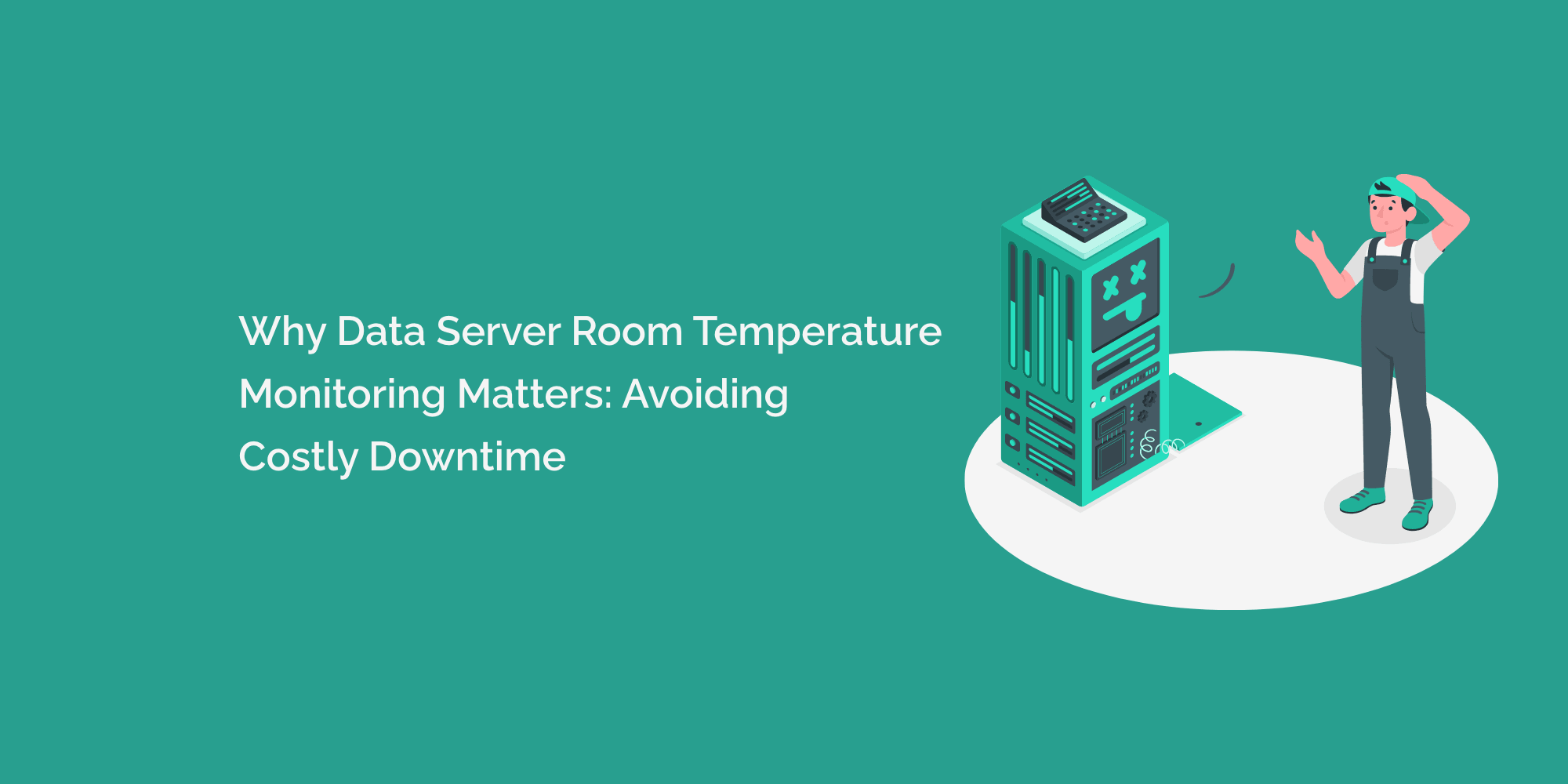In today's digital age, data centers and server rooms play a critical role in storing and processing vast amounts of information for businesses and organizations. The seamless functioning of data servers is essential for smooth operations and uninterrupted services. However, these servers generate a significant amount of heat, and maintaining the right temperature within the server room is vital for their optimal performance and longevity. In this comprehensive blog, we will explore why data server room temperature monitoring matters and how it helps in avoiding costly downtime that can have severe implications for businesses.
The Significance of Data Server Room Temperature:
Data servers are highly sensitive to temperature fluctuations. The components within these servers, such as CPUs, hard drives, and memory modules, generate substantial heat while processing and storing data. To ensure the servers function optimally, it is crucial to maintain a stable and controlled environment within the server room.
-
Optimal Temperature Range: The ideal temperature range for data server rooms is typically between 64°F to 80°F (18°C to 27°C). Operating within this range helps prevent overheating, which can lead to hardware failures and system crashes.
-
Impact of Heat on Server Performance: High temperatures can lead to thermal throttling, where the server's performance is reduced to prevent damage. This can result in slower processing speeds and delays in data retrieval.
- Risk of Downtime: Temperature-related issues, such as overheating, are one of the leading causes of server downtime. Downtime can result in loss of productivity, revenue, and customer trust.
The Role of Temperature Monitoring in Data Server Rooms:
Temperature monitoring is a proactive approach to ensuring the health and reliability of data servers. By constantly monitoring the temperature, server administrators can identify and address temperature fluctuations before they lead to critical issues. Here's why temperature monitoring matters:
-
Early Detection of Issues: Temperature monitoring allows administrators to detect rising temperatures before they escalate into serious problems. Early detection enables timely corrective actions.
-
Preventing Overheating: Monitoring helps prevent server components from reaching dangerous temperatures, reducing the risk of overheating and hardware failures.
-
Maintaining Optimal Performance: By ensuring the server operates within the recommended temperature range, administrators can maintain optimal performance and efficiency.
-
Data Protection: Proper temperature monitoring safeguards critical data from potential damage due to temperature-related failures.
-
Minimizing Downtime: By addressing temperature-related issues promptly, administrators can minimize server downtime and maintain uninterrupted operations.
- Reducing Maintenance Costs: Proactive temperature monitoring reduces the need for costly emergency repairs and component replacements.
Common Causes of Temperature Fluctuations:
Several factors can contribute to temperature fluctuations within data server rooms:
-
Insufficient Cooling Systems: Inadequate or malfunctioning cooling systems can lead to increased temperatures within the server room.
-
Overcrowding and Poor Airflow: Poorly organized server racks and overcrowding can obstruct airflow, resulting in localized heat buildup.
-
Air Conditioning Failures: Malfunctioning air conditioning systems can cause temperature spikes in the server room.
-
Power Outages: Power outages or failures can disrupt cooling systems, leading to temperature fluctuations.
- Environmental Factors: External weather conditions, such as extreme heatwaves, can impact the temperature inside the server room.
Choosing the Right Temperature Monitoring Solution:
When selecting a temperature monitoring solution for data server rooms, consider the following factors:
-
Real-Time Monitoring: Choose a system that provides real-time temperature updates to allow for immediate responses to any changes.
-
Remote Access and Alerts: Opt for a monitoring solution that offers remote access and sends alerts via email or SMS when temperatures deviate from the optimal range.
-
Sensor Placement: Strategically place temperature sensors in different areas of the server room to monitor temperature variations effectively.
-
Data Logging and Reporting: Look for a system that logs temperature data over time and generates detailed reports for analysis.
-
Integration with Existing Systems: Consider whether the monitoring solution can integrate with existing infrastructure management tools for a seamless workflow.
- Scalability: Choose a solution that can accommodate the growth and expansion of the data server room.
Best Practices for Data Server Room Temperature Monitoring:
To make the most of temperature monitoring, follow these best practices:
-
Regular Checks: Perform regular checks of the monitoring system to ensure it is functioning correctly.
-
Set Alert Thresholds: Configure temperature alerts with specific threshold levels to prompt action when necessary.
-
Conduct Preventive Maintenance: Regularly maintain cooling systems and ensure proper airflow to prevent temperature fluctuations.
-
Emergency Response Plan: Develop an emergency response plan to address temperature-related issues promptly.
-
Train Staff: Educate data center staff on temperature monitoring procedures and the importance of timely responses.
- Analyze Temperature Data: Regularly review temperature data and reports to identify trends and potential issues.
Conclusion:
Data server room temperature monitoring is a crucial aspect of data center management. By maintaining the optimal temperature range, businesses can avoid costly downtime, hardware failures, and data loss. Proactive temperature monitoring enables early detection of issues, allowing administrators to take prompt corrective actions and ensure uninterrupted operations. Choosing the right monitoring solution, following best practices, and implementing preventive measures are essential steps in safeguarding the performance and reliability of data servers. With efficient temperature monitoring in place, businesses can focus on leveraging their data infrastructure to drive innovation, productivity, and growth.








